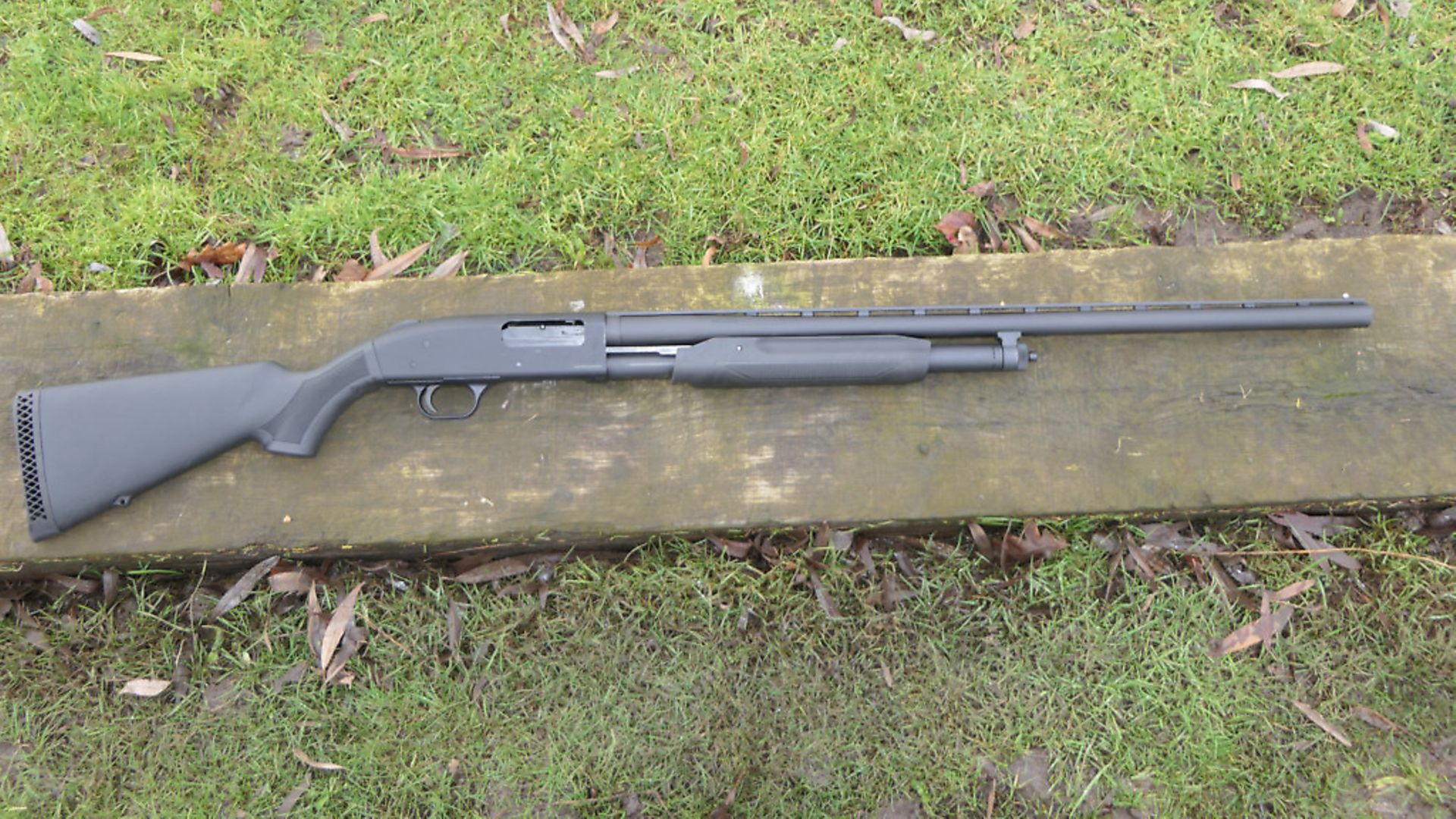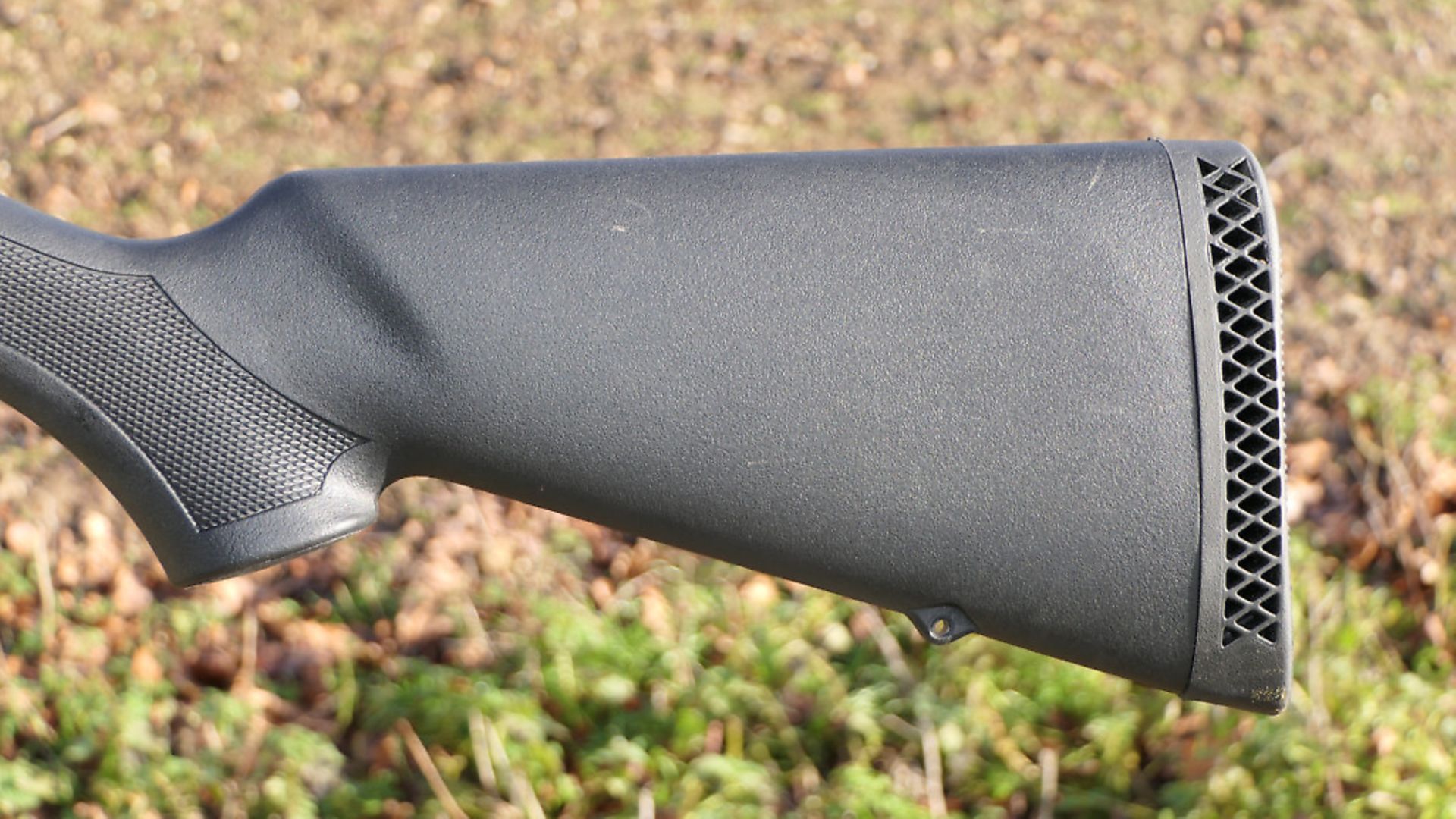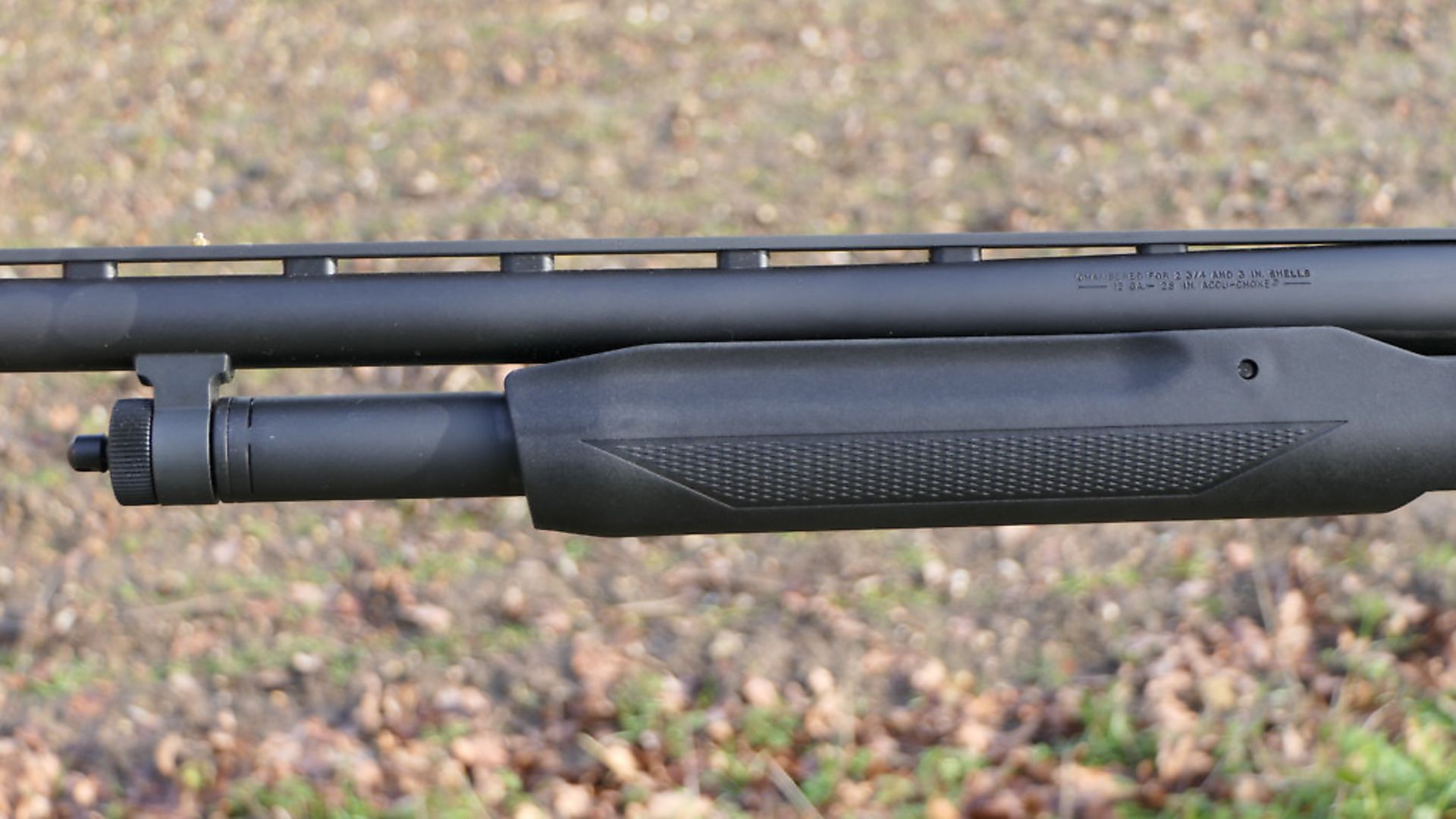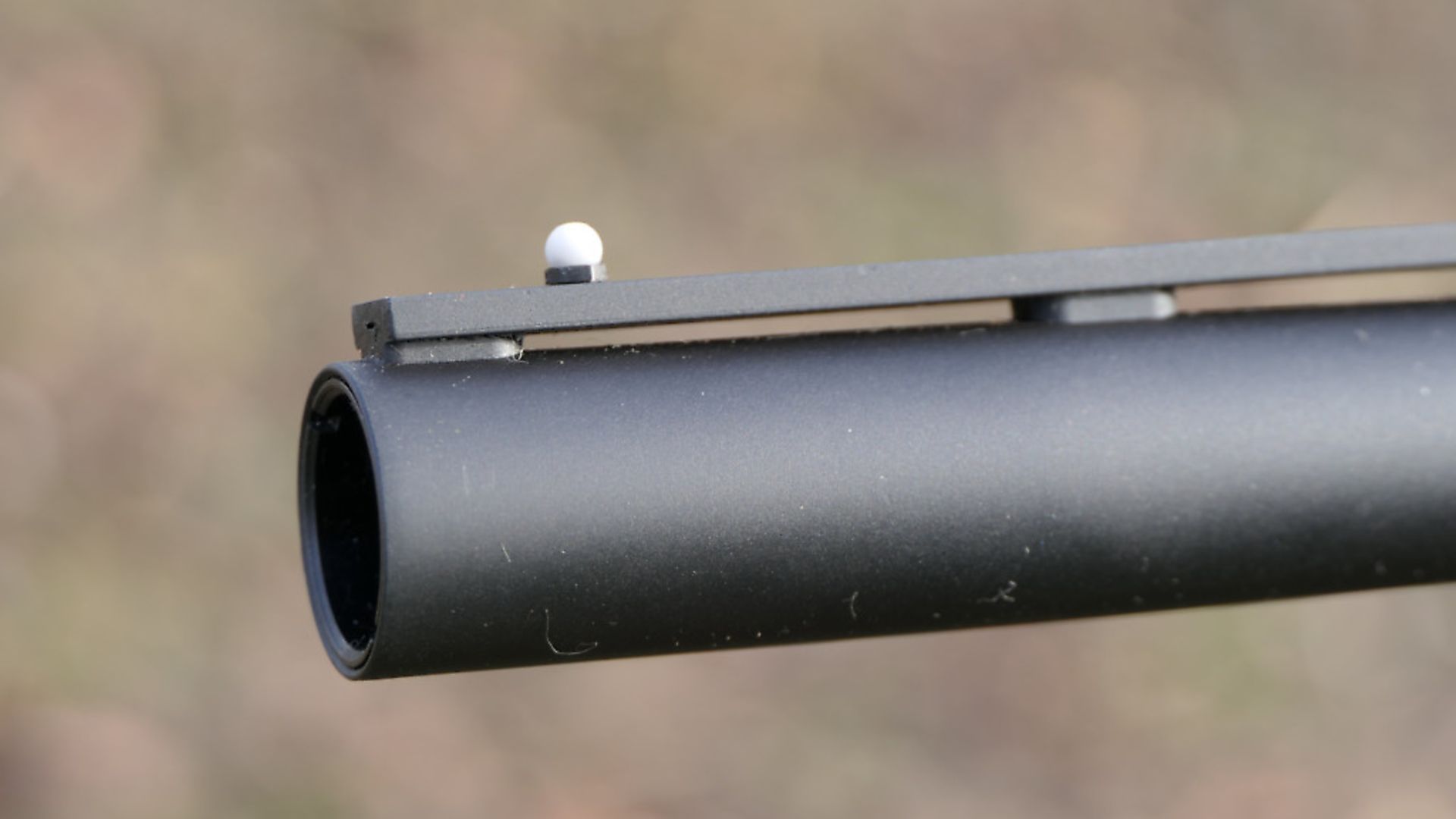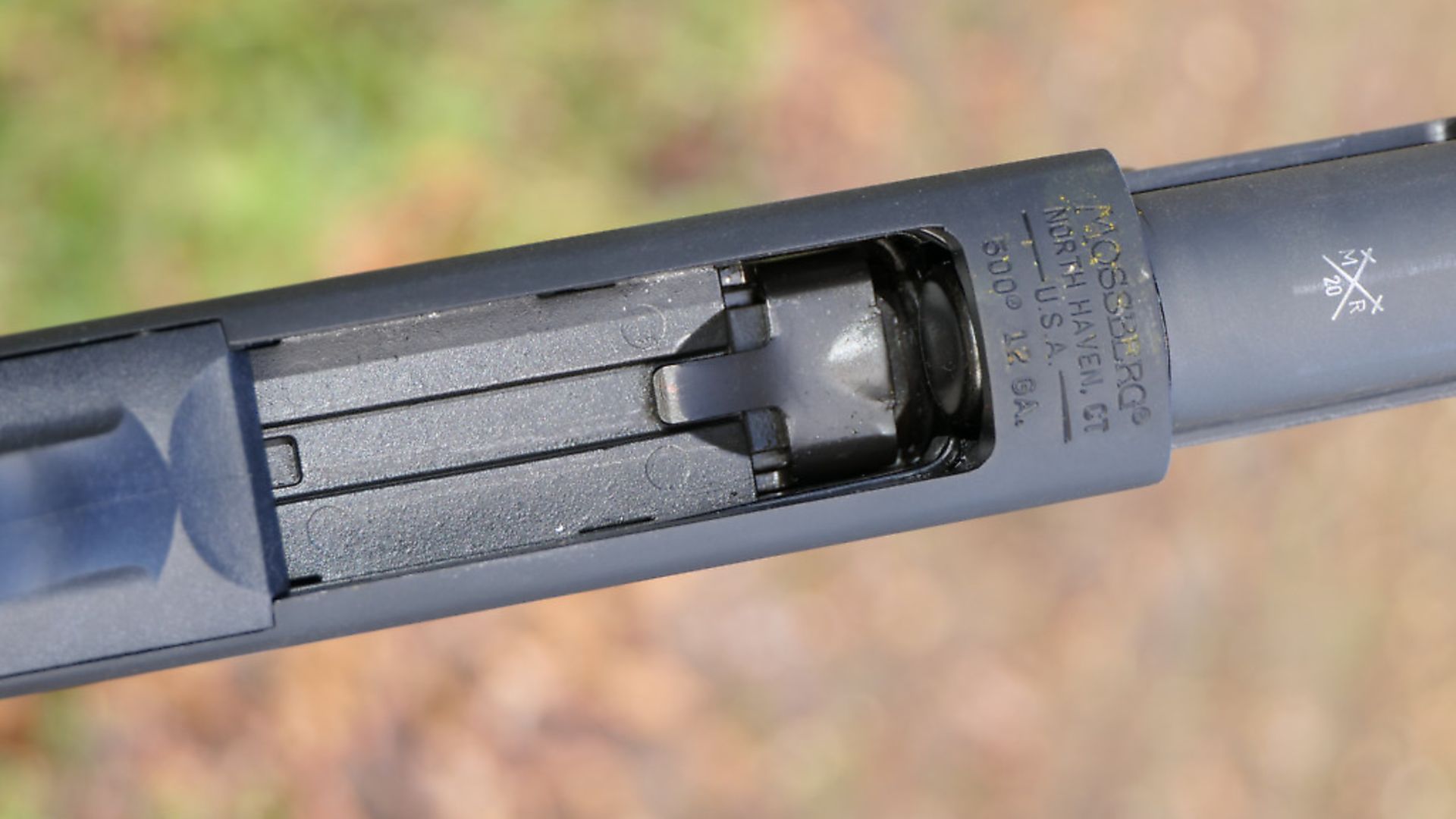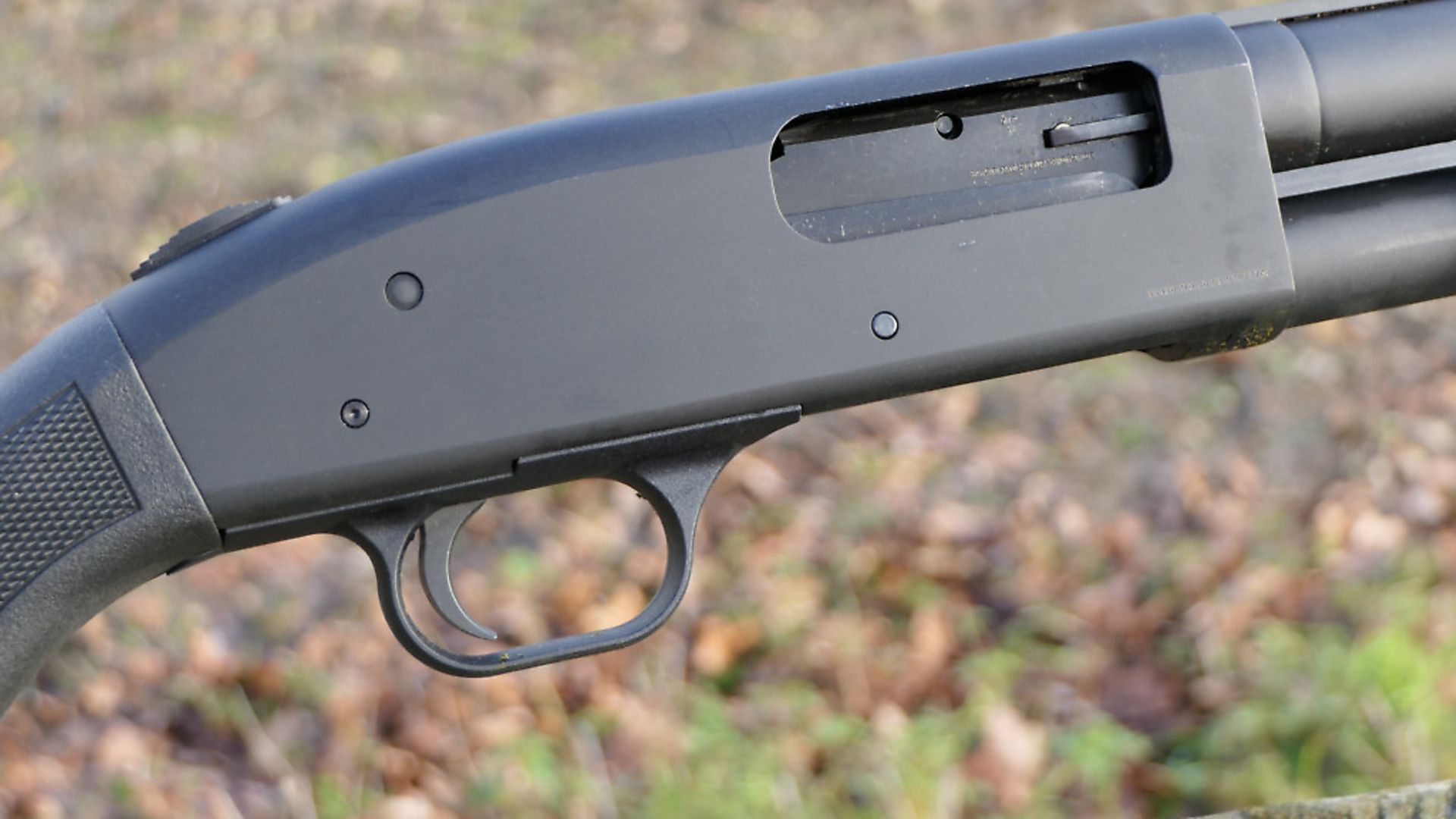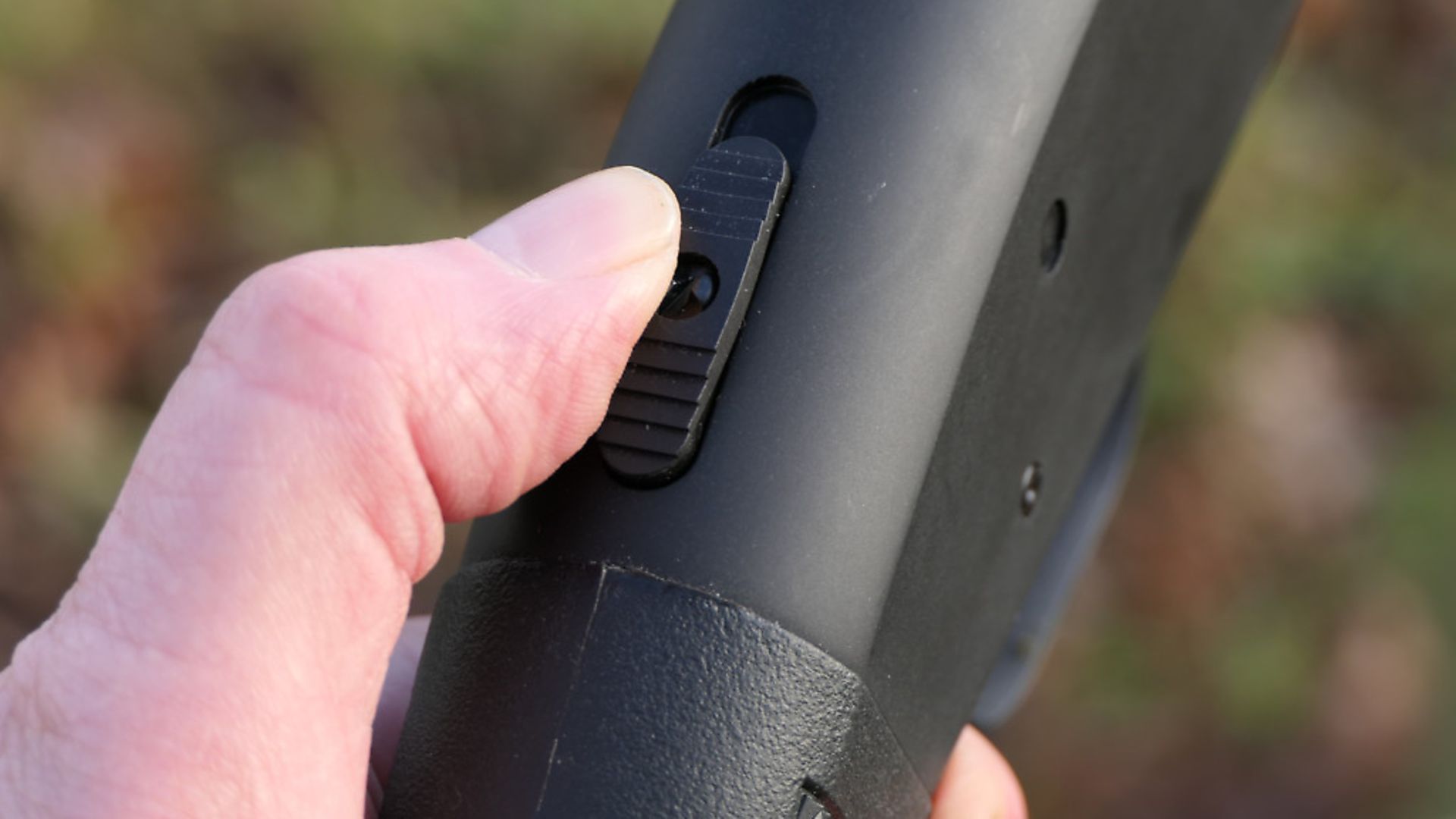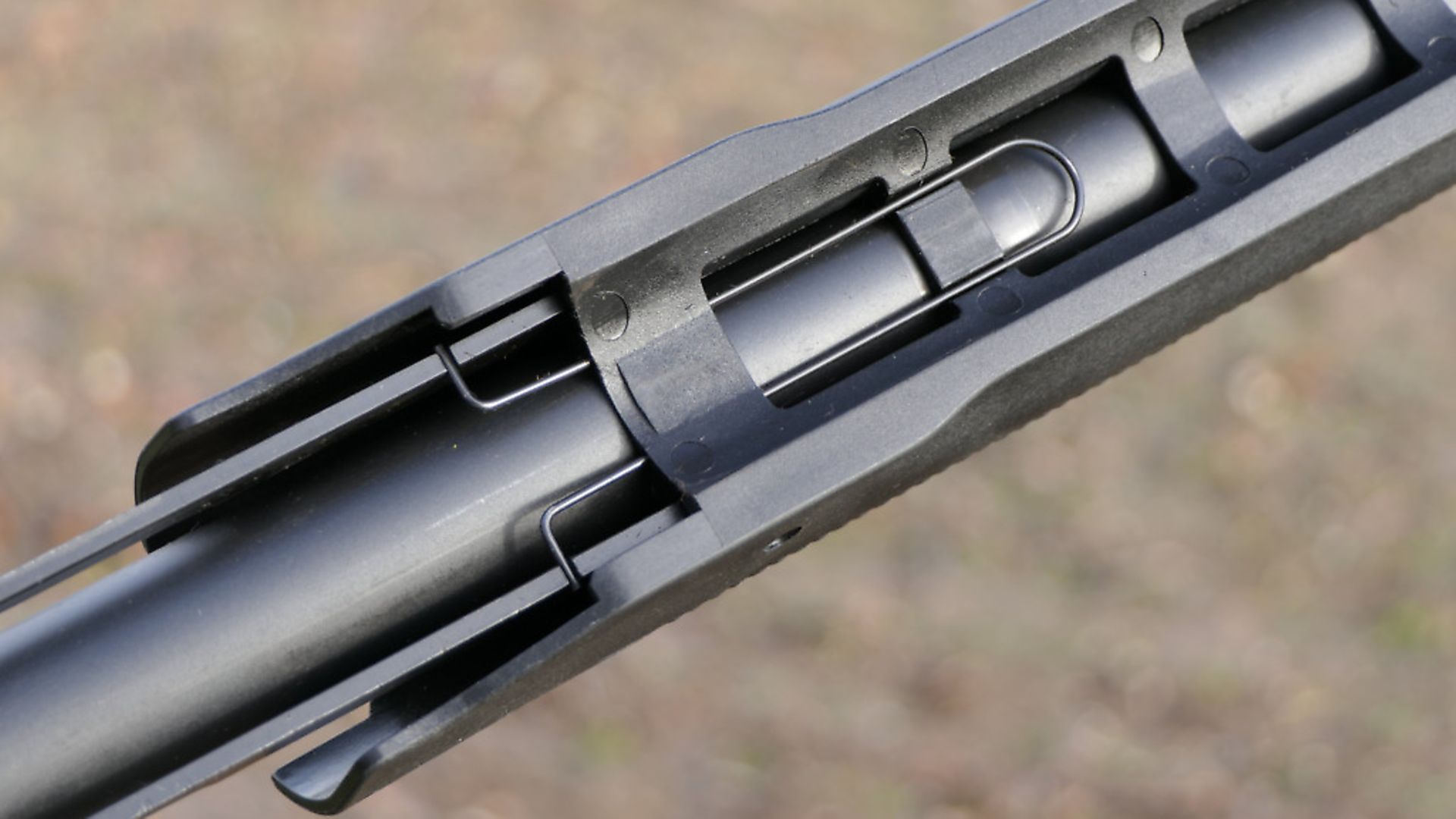Mossberg 500 Field pump-action – test & review
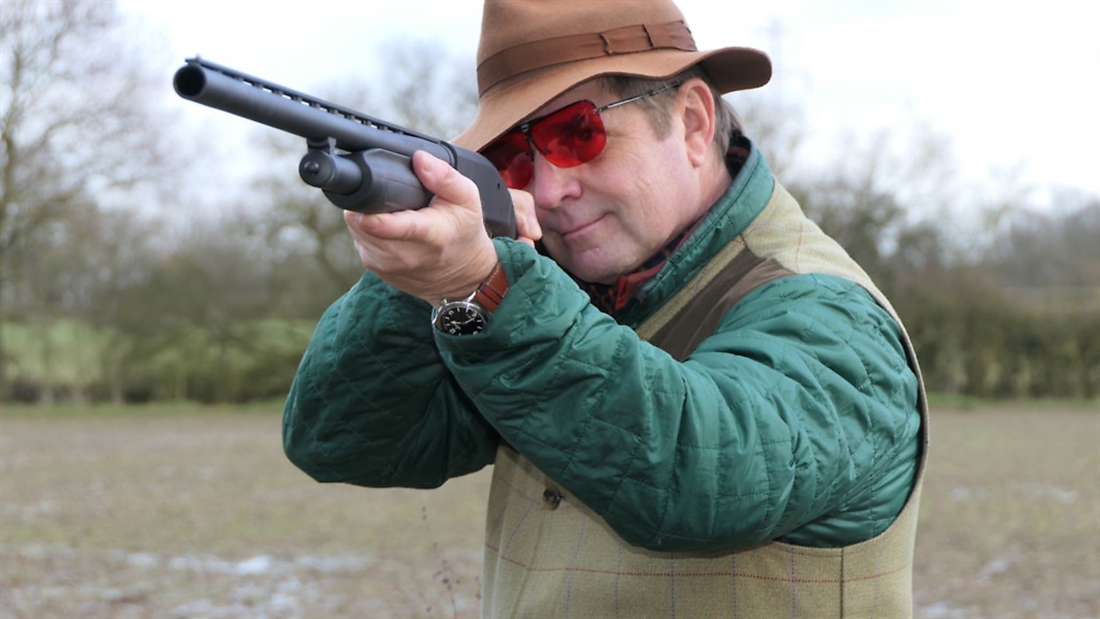
Mike Yardley struggles to find a flaw with the Mossberg 500 Field pump-action shotgun in this gun test and review
Mossberg 500 pump-action shotgun – brief overview
WE LIKE: The simplicity: The functional no-nonsense style; The 10mm matted rib
WE DON’T LIKE: The stock could be a little longer and higher
Mossberg 500 pump-action shotgun – in-depth review
This month’s test gun is a blast from the past – at least for me it is. It’s a Mossberg 500 Field pump-action 12-bore, imported by well-known Harrogate firearms distributor, Viking Arms – one of the big players in the UK gun trade.
First impressions are of a mid-weight (approx. 7lb) workhorse. The gun has a 28” multi-choked barrel (that’s the only length on offer). It is fitted with a 10mm flat, matted, ventilated rib and is 3” magnum, proofed (in Birmingham) for steel shot. Its black synthetic stock is fitted with a black vented rubber pad. And the action and barrel have a Parkerised-like matt black finish.
You don’t have to have a black gun, though; there is a wood-stocked version on offer at the same price. There is also a moderately deluxe model with better wood, a jewelled bolt and a fancier white-line recoil pad.
In the US, the Mossberg 500 ranks as one of the most popular shotguns with over 11 million sold. Keenly priced, it is offered there in all sorts of sporting, military and police variants; there is even a 500-based line-throwing gun (not to mention that the veritable industry offering retrofit bits, including a conversion kit to turn the 12-bore into a .50-cal muzzleloader). This hugely successful pump gun is seen in 12-bore, 20-bore and .410 guises, and with five- and eight-shot extended magazine, available in the 12. Hushpower in the UK use the 500 as the basis for some of their sound-moderated guns (and their little .410 is one of the best guns of this type on offer, in my opinion).
I’ve used 500s for many years. I never saw one in the army, but I know they were issued, on occasion, for urban and jungle warfare applications (as were Browning Auto-5s and Greener GPs, many years back). They are a well-proven design, with an alloy receiver and double-action bars. They are extremely reliable (and hence so popular with the police and military, as well as with civilian users). And they handle well, even though the US stocks tend to be a bit short and low in the comb (the test gun has an LOP of 14¼”, with a stock drop of 1½” and just over 2¼”).
One especially interesting feature of the 500 design is its side-by-side style sliding safety, placed conventionally to the rear of the action (most repeaters have a bar-type safety to the rear of the trigger guard). So, you won’t have to retrain yourself much to use one if you are not familiar with repeaters. Generally, we don’t quite get pump guns here, but the sliding safety will make it a little less alien to Brits more used to double guns.
Pump gun history
Can’t resist a bit of history, especially as nearly all repeaters begin, conceptually, as pump guns: most semi-automatics are just designs that have been adapted/evolved to use recoil energy or gas to operate a pump-style action. Pump-action shotguns have been around for 140 years. The first successful gun, and the one which established the magazine-below-the-barrel and reciprocating fore-end configuration that has since become so familiar, was the six-shot Spencer, patented in 1882.
It was the work of a collaboration between Christopher Spencer, of Spencer rifle fame, and the no-less-gifted inventor, Sylvester Roper, who had previously developed a revolving shotgun. John Moses Browning, who invented the excellent 1887 Winchester lever-action shotgun came up with a number of improved pump-action designs during the middle and late 1880s. He sold these to Winchester periodically, but none was actually manufactured until the appearance of the Winchester Model 1893.
This led Winchester into litigation with the man who had acquired the rights to the Spencer – one Francis Bannerman. After a long battle, during which Winchester proved that sliding actions had existed in Europe previously, Bannerman lost. Winchester went on to create the improved Model 1897, then their famous Model 12. Many other manufacturers followed suit.
Technical
The Mossberg 500 model first appeared in 1961, and was improved with double-action bars in 1970. The firm itself was founded in 1919 by Swedish firearms engineer, Oscar Frederick Mossberg. The 500’s alloy-action, meantime, has become a classic of its type. Good, simple and strong. It is capable of being proofed for 3” steel loads. Many earlier pump guns had single-action bars which tended to bend or break under pressure.
Mossberg changed to the superior twin-bar configuration when Remington’s patent on the feature ran out (the Remington 870 remains a design classic, and has sold a similar number to the Mossberg – 10 million plus).
This is a gun designed from the start for economical industrialised manufacture. It hasn’t changed much in its basic concept over the years, even with all the variants.
The pump design necessitates less cleaning than a gas-operated semi-auto. The Accu chokes supplied are shorter than many modern ones, but have a reputation for patterning well nevertheless.
Shooting Impressions
You are not going to win a sporting clays competition with the 500; nor are you going to take it on a driven shoot, unless you really want to wind up your host. However, if you need a Land Rover of a gun for the farm or shoot, or, if you want to have something you don’t need to worry about on the marsh or in a hide, this could be just the ticket.
The gun isn’t heavy at 7lbs, and it is surprisingly well balanced. When you shoot the 500, it cycles intuitively. It’s completely reliable with 2¾” and 3” loads (it’s not designed for British 2½”/65mm loads, which will jam in it). The trigger pull isn’t bad either. The only thing I could fault was that the well-positioned thumb safety was a bit stiff. Recoil was noticeable but not unpleasant, with my usual Lyalvale Express 28g repeater loads. Overall, I liked the Mossberg. It is still in production because, like a Silver Pigeon or a Holland Royal, it’s a first-class time-proven design.
Make: Mossberg
Model: 500
Type: pump-action with twin-action bars
Bore: 12 (with 20 and .410 options)
Barrel: 30” (no options)
Proof: 3” steel with Birmingham marks
Weight: 7lbs approx.
RRP: £595 (with a wooden stock option at no extra cost)




